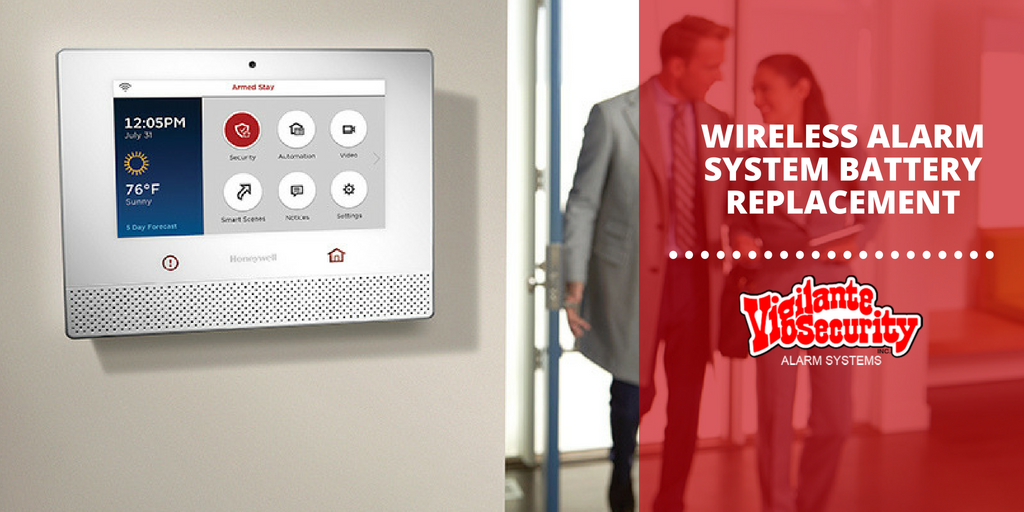Wireless Alarm System Battery Replacement
Vigilante Security offers two types of alarm systems, wired or wireless. With a wired system the keypads, door and window contacts, motion sensors, glass break and smoke detectors are all connected to the alarm panel using wires. The wires provide power to the various devices and transmit alarm signals back to the alarm panel.
Wireless alarm control panels communicate with the alarm devices via a radio signal. There are no wire connections. Each device is powered by internal batteries. Devices, depending on type, contain different sizes, numbers and types of batteries. Some have a single battery. Other devices may use multiple batteries. While battery technology today allows for longer operation, batteries will not last forever and will need to be replaced.
In a wireless system the control panel is powered by the home’s power with an internal back up battery in the event of a power loss. As discussed in last month’s email, the system will report the battery life to the central station, in addition to an indication on the keypad screen. The central station will contact you if a low battery signal is received by the control panel.
The various devices also transmit their battery strength, as well as trouble, tamper and, in the case of some CO and smoke detectors, end of life, back to the control panel. The keypad display will indicate the trouble status of the devices. The trouble signals are then sent to the central station.
If you receive a call from the central station or are seeing a low battery indication on the alarm keypad, you will need to change the batteries of the device in question. You can change these batteries or you can have Vigilante Security send a service technician to replace them. The basic operation will be to remove the cover and then remove the old battery and replace with the new. Again, it may be beneficial for a service technician to come out the first time to tutor you in the proper procedures.
NOTE: Observe polarity. Insert the battery with the positive (+) terminal toward the positive terminal block. Reversing the polarity may cause the device not to work or to short out and damage the device.Again, please remember that some devices use more than one battery and not all devices use the same types of batteries. You will want to have the proper types and number of batteries on hand before you open devices.
CAUTION!
Be sure to call the central station to put the system in “Test” before working on it.
If you start opening devices, the system will report to the central station that they are being tampered with and the central station will contact you. It is better that you contact them first.
NOTE:
Plastic cases on your transmitters may be brittle from heat or age and may break when you remove them. Use caution when taking apart. If broken, they may need to be replaced to work properly.
It may be practical to replace the batteries in all of the devices at the same time. “Murphy’s Law” states that as soon as you change one battery, another device will go bad next week.
Battery life in wireless sensors can vary greatly. The type and model of wireless sensor is the primary contributing factor. Refer to the manual for your device, or contact our service department, to determine what the manufacturer states the average battery life will be and what type and number of batteries the devices requires. Another factor is the type of battery used, such as alkaline vs. lithium. Usually, lithium batteries will last longer, and most modern alarm sensors now use them. Each wireless sensor will have specifications with regard to the batteries that can be used.
DO NOT USE BATTERIES NOT APPROVED BY THE MANUFACTURER.
Frequency of use is also a contributing factor to the length of battery life, or lack thereof. For example, a door that is opened and closed hundreds of times a day will wear down its battery on the door contact much more quickly than the sensor on a window that is rarely opened.
Again, contact Vigilante Security’s service department, 248-559-7100 x 628, to discuss options for the replacement of your wireless system’s batteries. Feel free to contact us with any questions you may have.

